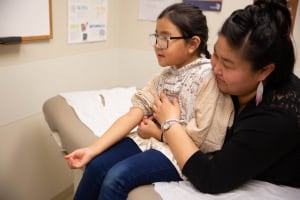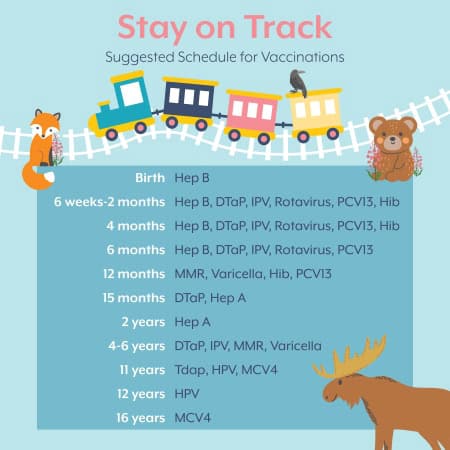Gifting Wellness to the Future Through Vaccinations
By Public Relations Specialist Addison Arave
In the early 1940s, an influx of settlers introduced new diseases to Alaska Native populations. Illnesses such as meningitis, chicken pox, whooping cough, and influenza were detrimental to communities with no preventative strategies. Over the past several decades, however, medical researchers have developed vaccines to help prevent these diseases. These vaccinations have had an incredible effect on the rate of vaccine-preventable infections and deaths, which help protect vulnerable individuals.

You can discuss your questions or concerns about childhood immunizations with your or your child’s primary care provider.
To understand the importance of vaccinations, it is important to know how the human body fights illness and the role of vaccines in that process. When the body is infected with a virus or bacteria, the immune system sends white blood cells to fight the infection. Once a body learns how to fight a particular illness, it retains antibodies that protect from future exposures to the same or similar viruses and bacteria. That is why immunizations are so important – they mimic an infection, which lets the body practice its defense.
This is especially valuable for children, who are being newly exposed to viruses and bacteria each day. Parents or guardians of infants, toddlers, and school-age children are strongly encouraged to vaccinate their children. Decades of research have given experts the history and evidence needed to create a recommended vaccine schedule. This schedule considers vaccinations that require multiple, spaced-out doses to offer complete protection; age-based risk factors, and which vaccines can be taken simultaneously. Staying on track will provide the best protection, not only for the immunized children, but their communities.
The United States has vaccination requirements for childcare facilities and schools. Schools have vaccination requirements because any group setting inherently increases the risk of infection. According to the Alaska Department of Health Division of Public Health, children enrolled in Alaska schools must be immunized against:
- Diphtheria
- Tetanus
- Pertussis
- Polio
- Measles
- Mumps
- Rubella
- Hepatitis A
- Hepatitis B
- Varicella
(chicken pox) - Hib
 Because immunizations are available and requirements are in place for these conditions, rates of infection now vastly contrast history. According to the Centers for Disease Control and Prevention, measles infected three to four million people and killed 400 to 500 people annually in the decade prior to 1963. This serious infection affects young children and causes cough, runny nose, inflamed eyes, sore throat, fever, and rash. Last year, there were zero reported cases of measles in Alaska, 121 reported cases in the United States, and zero resulting deaths. This example demonstrates that immunizations provide safety and security on a large scale.
Because immunizations are available and requirements are in place for these conditions, rates of infection now vastly contrast history. According to the Centers for Disease Control and Prevention, measles infected three to four million people and killed 400 to 500 people annually in the decade prior to 1963. This serious infection affects young children and causes cough, runny nose, inflamed eyes, sore throat, fever, and rash. Last year, there were zero reported cases of measles in Alaska, 121 reported cases in the United States, and zero resulting deaths. This example demonstrates that immunizations provide safety and security on a large scale.
Even with evidence of the effectiveness of vaccines, it is reasonable and expected for parents to have questions about childhood injections. Southcentral Foundation health educators, primary care providers, and pediatricians are available to answer those questions and provide materials sharing how the vaccines work, potential risks, and benefits.
For more information, talk with your child’s provider during your child’s next well-child check up or back-to-school physical, or call 907-729-3300 to schedule a telehealth or in-person appointment.


